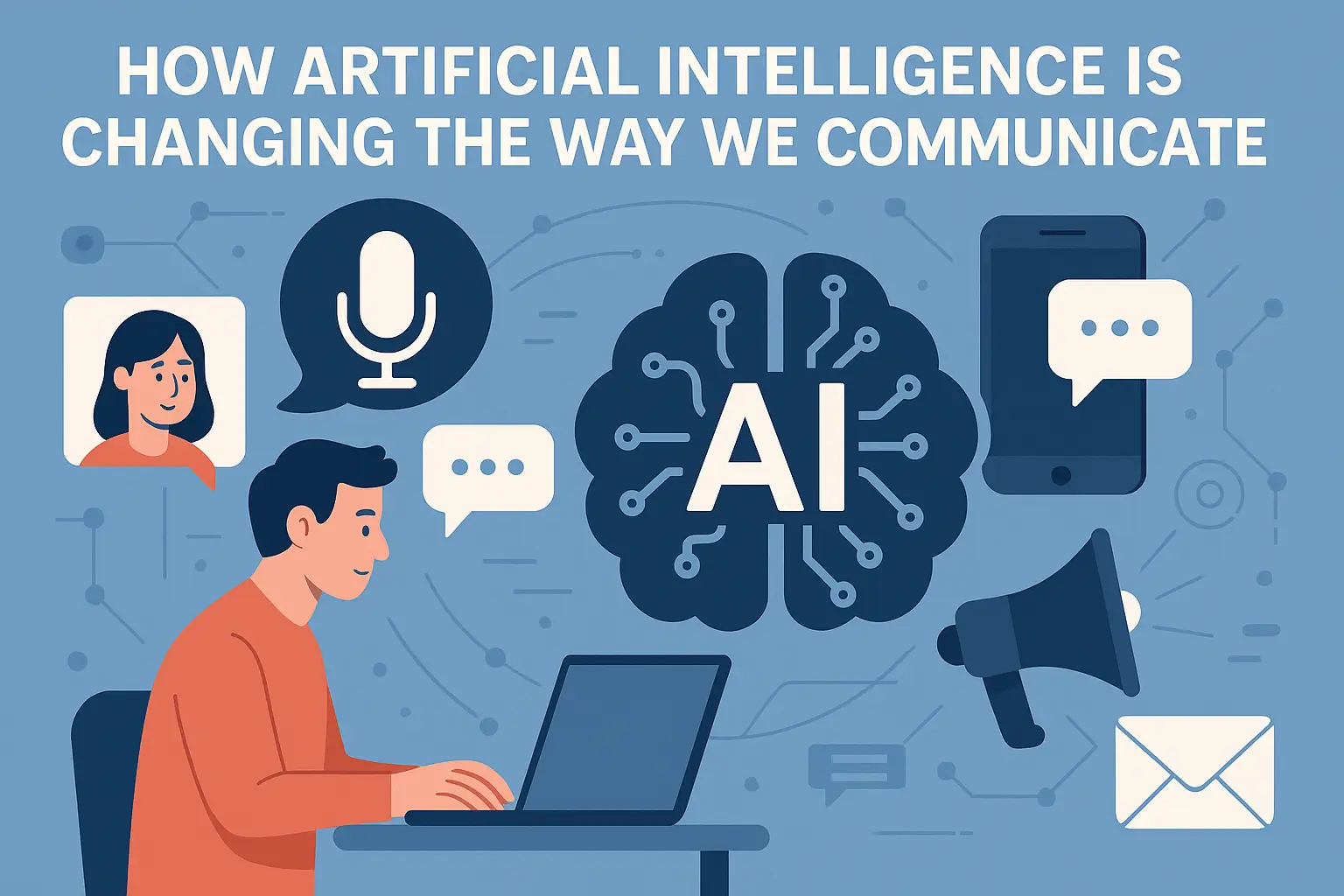Communication is a fundamental part of human life—and now, it’s being transformed by Artificial Intelligence (AI). From language translation to real-time transcription and sentiment analysis, AI is enabling faster, smarter, and more inclusive ways to connect across cultures, languages, and platforms.
In this article, we’ll explore how AI is reshaping human communication and what it means for individuals, businesses, and society.
AI-Powered Language Translation
AI has revolutionized translation with tools like Google Translate and DeepL. These systems use neural machine translation (NMT) to:
- Accurately translate text and speech in real time
- Understand context, tone, and idiomatic expressions
- Support dozens of languages for global communication
This allows people to connect and collaborate regardless of linguistic barriers, fostering greater international understanding and cooperation.
Real-Time Transcription and Captioning
Speech-to-text AI systems provide instant transcription of spoken language. Key applications include:
- Live captions for virtual meetings, webinars, and events
- Automatic transcription of podcasts and interviews
- Accessibility tools for people with hearing impairments
Platforms like Zoom, Microsoft Teams, and Otter.ai integrate these features to support more inclusive communication.
Virtual Assistants and Voice Interfaces
AI-driven voice assistants like Siri, Alexa, and Google Assistant are changing how we interact with technology. They:
- Interpret spoken commands to perform tasks
- Answer questions and provide information
- Control smart home devices and apps
- Assist with reminders, navigation, and scheduling
Voice technology is especially helpful in hands-free environments and for users with mobility challenges.
AI in Customer Support and Chatbots
Businesses use AI chatbots to provide instant, efficient customer service. These bots:
- Handle FAQs and troubleshoot common issues
- Escalate complex problems to human agents
- Learn from past interactions to improve over time
- Support multiple languages and channels
AI chat support enhances availability and responsiveness while reducing operational costs.
Sentiment Analysis and Emotion Detection
AI can analyze text, speech, and facial expressions to assess emotional tone. Applications include:
- Monitoring social media sentiment about brands or events
- Analyzing customer reviews and feedback
- Improving mental health tools and therapy bots
- Enhancing video conferencing by recognizing emotions
These insights help individuals and organizations better understand how people feel—and respond appropriately.
AI in Business Communication
AI tools streamline internal communication in the workplace through:
- Smart email assistants that suggest responses or summarize threads
- Automatic meeting notes and action items
- AI-powered collaboration platforms like Notion and Slack
- Language style adjustment for tone and clarity
This increases productivity and ensures that messages are clear, concise, and effective.
AI and Communication Accessibility
AI is breaking down communication barriers for people with disabilities by:
- Converting speech to text and vice versa
- Translating sign language into spoken language using computer vision
- Offering predictive text and alternative communication devices
- Customizing interfaces for cognitive or learning differences
These advancements promote inclusivity and equal access to information.
Deepfake and Synthetic Media in Communication
While AI can enhance communication, it also introduces risks through synthetic media. Deepfakes use AI to manipulate audio and video content, raising concerns around:
- Disinformation and fake news
- Identity theft and impersonation
- Erosion of trust in digital communication
To combat this, AI is also being used to detect manipulated content and verify authenticity.
AI in Content Creation and Messaging
AI tools help generate written and visual content, such as:
- Automated email and SMS campaigns
- Blog posts, captions, and scripts
- Personalized communication at scale
- Visual storytelling using generative AI
This allows brands and creators to engage their audiences more effectively and consistently.
Benefits of AI in Communication
1. Speed and Efficiency
AI processes and delivers messages faster than humans, improving responsiveness.
2. Global Reach
Language translation and localization tools connect people across cultures and continents.
3. Personalization
AI tailors communication to individual preferences, boosting engagement and satisfaction.
4. Accessibility
Speech and text tools enable communication for people with various impairments.
5. Data Insights
AI provides feedback on communication effectiveness, helping improve clarity and tone.
Challenges and Ethical Concerns
1. Privacy and Consent
AI systems collect and process sensitive communication data. Responsible handling is essential.
2. Bias and Inaccuracy
AI may misinterpret tone, intent, or cultural nuance, leading to misunderstandings.
3. Deepfake and Misinformation
Manipulated content can erode trust and spread harmful information.
4. Over-Automation
Too much AI-generated messaging can feel impersonal or robotic.
5. Dependence on Technology
Excessive reliance on AI may weaken critical thinking and interpersonal skills.
Future Trends in AI Communication
Looking ahead, we can expect:
- Emotionally intelligent AI that adapts tone and content based on user mood
- Multilingual video calls with real-time subtitles and translations
- AI-powered negotiation and mediation tools
- Synthetic avatars for virtual meetings and presentations
- Decentralized AI communication networks with enhanced privacy
These developments will make communication more fluid, inclusive, and intelligent.
Final Thoughts: Human Connection in the Age of AI
Artificial Intelligence is transforming communication—not by replacing human interaction, but by enhancing it. When used responsibly, AI can bridge language gaps, support accessibility, and streamline how we connect with others.
As we embrace these innovations, it’s essential to maintain empathy, authenticity, and critical thinking at the heart of every exchange.
